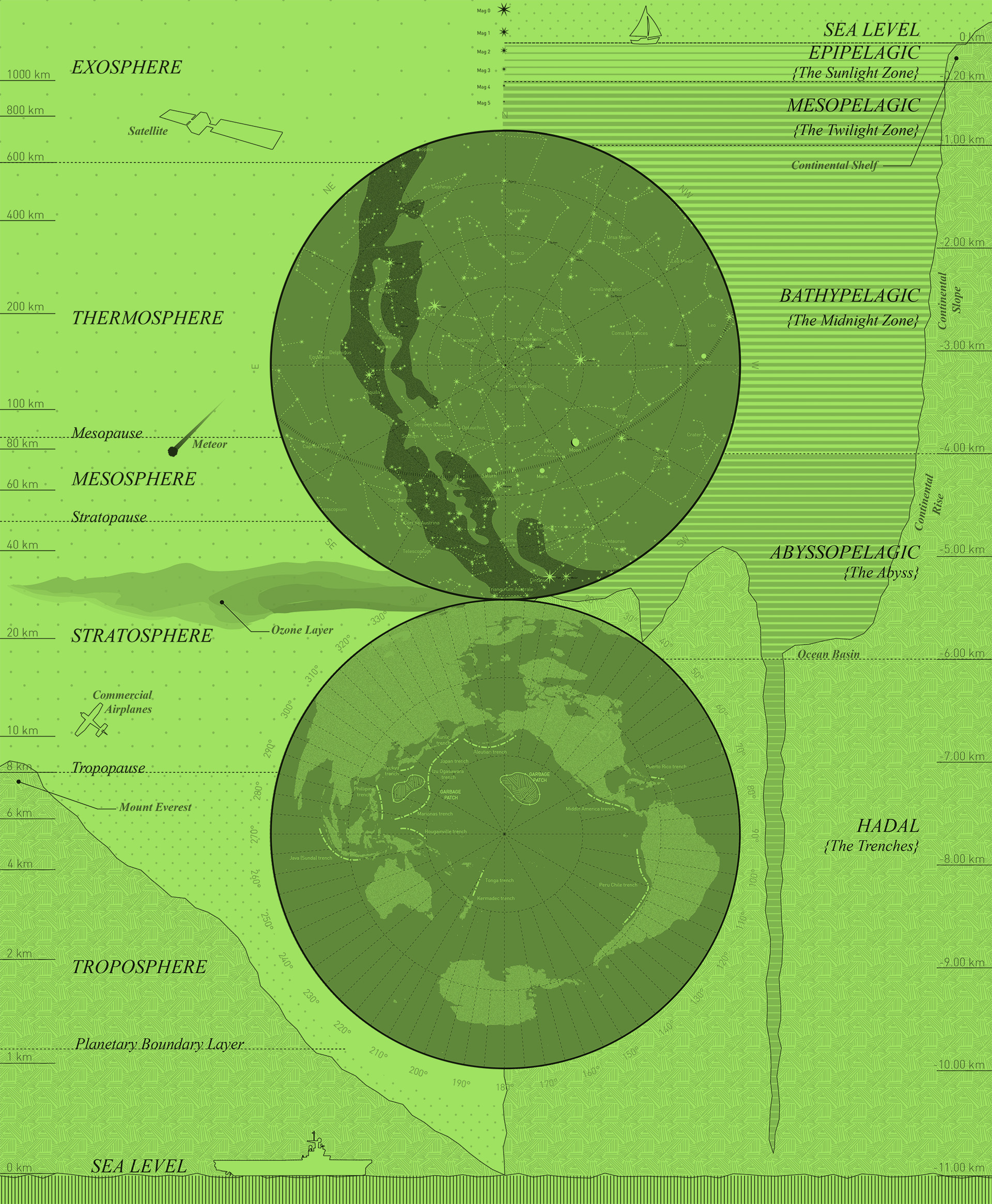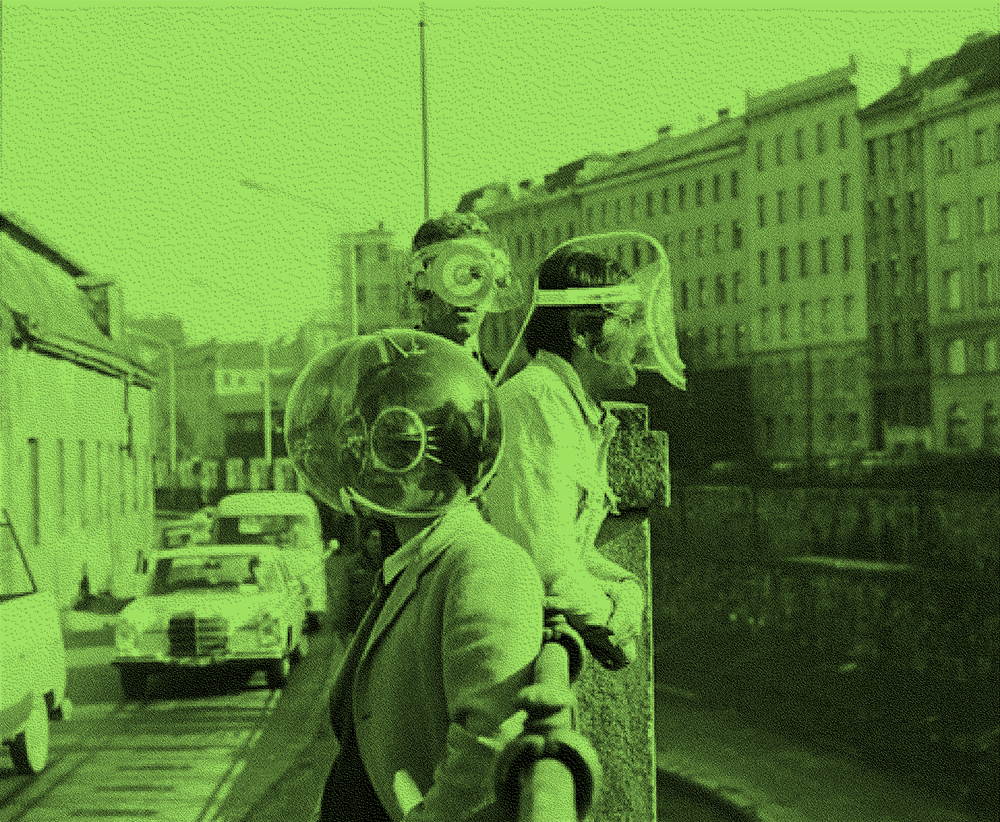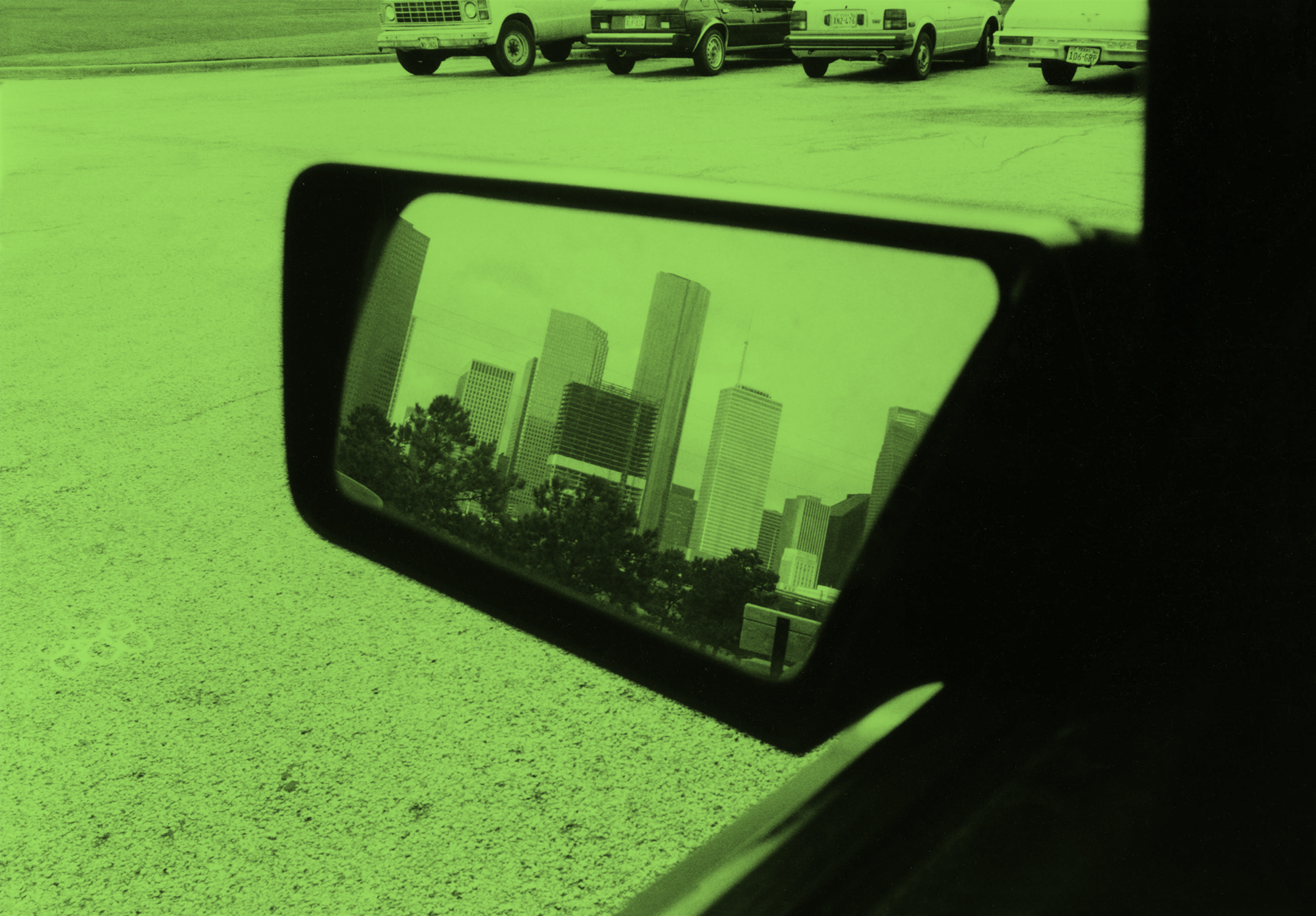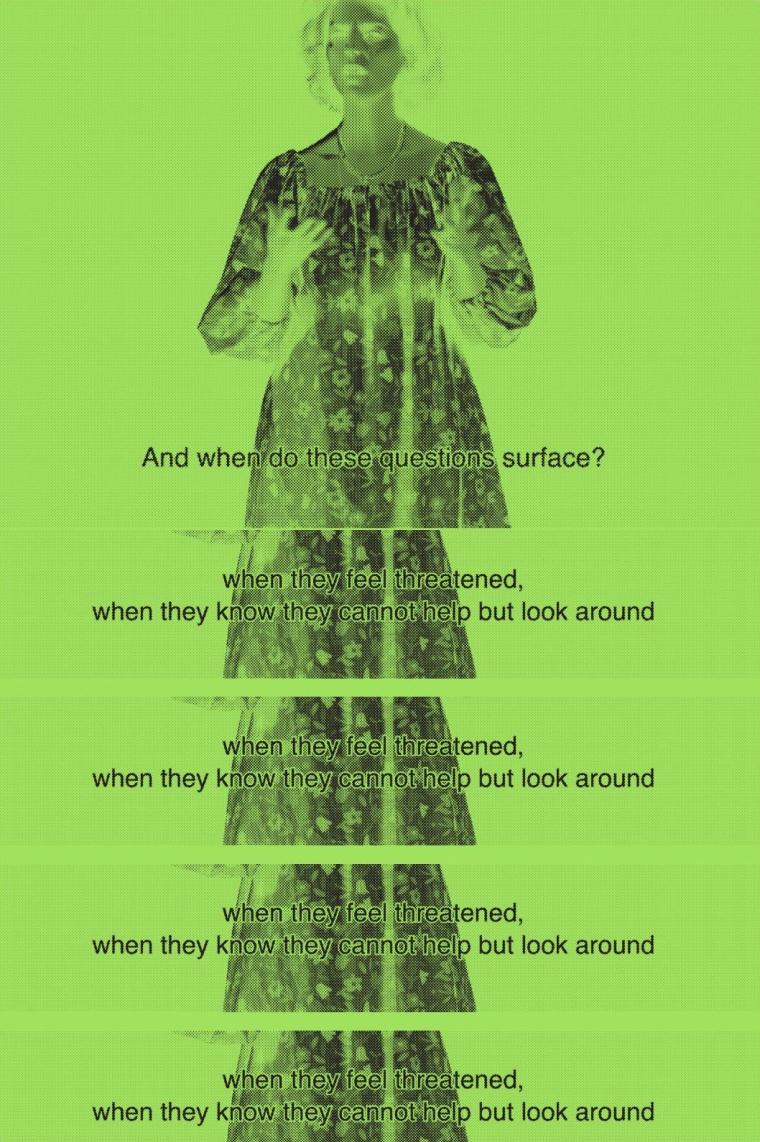Re-constructing Reality. Where to start?
Four books recommended by Lucinda Correia
In 2020, architect and researcher Lucinda Correia was invited to collaborate on a programme as part of maat Mode 2020. Counter-Architecture was her proposal, a programme organised around four sessions, each including a performative element, a talk and a debate guided by binary axes which oriented the talks of the invited key speakers: Reality/Fantasy (Rania Ghosn), Control/Transgression (Neil Leach), Disclosure/Concealment (Tatjana Schneider) and Logic/Absurd (Lars Lerup). The programme then led to the publication of Counter-Architecture. Re-constructing Reality / Green Paper.
Here, through four books published by the invited speakers of the four key talks, we will trace a line of thought that not only led to the conceptualisation of Counter-Architecture but also enabled constructive “meandering” on a complex subject: the future of what we now know as “urbanity”. The aim of this reflection is to underline the constructive impact of encounters with sensible perspectives and editorial attitudes, such as those advocated by these authors, not only in the following four books but throughout their general practices and academic work, and to share these with a wider audience.
Reality/Fantasy
Geostories: Another Architecture for the Environment
Rania Ghosn and El Hadi Jazairy / Design Earth, Actar Publishers, 2018.

Urbanisation across layers of the Earth — from the exosphere to the trenches — organised sectionally above and below the sea level. Drawing © Design Earth, from “Geostories: Another Architecture for the Environment” by Rania Ghosn and El Hadi Jazairy / Design Earth, Actar Publishers, 2018, p. 103.
“Architectural drawing is a device that brings Earth into matters of concern; it makes absent things visible, synthesises science and scales of knowledge on complex environmental issues, and engages actors and scales otherwise unaddressed.”
The architectural practice developed at the studio Design Earth by Rania Ghosn and El Hadi Jazairy follows Bruno Latour and Isabelle Stengers, who claim that “Gaia is intruding”. Through their research, Ghosn and Jazairy speculate on how architectural practice might respond to this reality by helping to tell the story of architecture's role in reproducing representations and narratives that form our worldview. In their book Geostories: Another Architecture for the Environment, they argue that “the environmental crisis can be seen not only as a crisis of the physical and technological environments; [but that] it is also a crisis of the cultural environment – of the modes of representation through which society relates to the complexity of environmental systems” (Ghosn, R. and Jazairy, El Hadi, 2019: 11). Aiming to make climate change graspable through different geo-graphic representations, the book is organised around three chapters: Terrarium, Aquarium and Planetarium. In the context of Counter-Architecture, Ghosn and Jazairy focused on three of the fourteen projects from the book (one from each chapter): After Oil (2016) (Terrarium), Pacific Aquarium (2016) (Aquarium) and Cosmorama (2018) (Planetarium). These architectural projects, presented in the context of speculative environmental design, “devise a representational machine that allows people to care, in which there is a visceral invitation for these questions to actually resonate, and to resonate beyond the short attention span of whatever disaster of the moment is in the headlines” (Rania Ghosn, Counter-Architecture: Re-constructing Reality | #1/4 – Reality/Fantasy). By doing so, Ghosn and Jazairy reflect on the costs of resource extraction and their environmental impact, reinforcing the notion that we need new narratives and representations of the climate crisis in order to make real engagement with such an abstract matter possible.
In her talk, whose title is the same as that of the book, Ghosn reinforces the “planetary concern” behind Geostories, as “speculative thinking – the belief that thoughts, actions and representations can influence the real” – is a critical response through which representation becomes a tool for knowledge and awareness. It is in this sense that Design Earth’s work highlights the importance and impact commonly used representational tools in architectural practice – such as drawings and renders – have on the process of envisioning and, in particular, creating alternative worlds.
-
Get a glimpse of the book
Control/Transgression
Rethinking Architecture: A Reader in Cultural Theory
Neil Leach (ed.) — Routledge, 1997.
![]()
© Jeremy Bentham, "A General Idea of a Penitentiary Panopticon" (1787). Retrieved here (November 2021).
“Transgression does not deny the principle of a limit. Indeed, transgression can be defined only in relation to a limit, and likewise a limit is not a limit unless it can be transgressed. [...] Transgression, then, can help to expose how architecture could be otherwise.”
First published in 1997, reprinted several times and with an upcoming third edition imminently due, Neil Leach's Rethinking Architecture is a seminal book, especially given the author's editorial vision. Despite architecture's close relationship with theory, this book is the first to bring together pivotal writings on architecture by key twentieth-century philosophers and cultural theorists. What could architects learn from these theoretical reflections from other disciplines? As the author emphasises, “there is a consistent body of critical thought on architecture that exists outside of mainstream architectural discourse; [and] such a body, it is argued, offers an effective means of rethinking architectural theory” (Leach, 1997: xiii). As a self-reflexive architectural inquiry, this book understands that “architecture is the product of a way of thinking” (Ibid: xv) and highlights the importance of thinking and rethinking the practice with outside input and, potentially, from within.
In his talk “The Politics of Space in the Age of Covid-19”, set within the framework of the Counter-Architecture programme, Leach takes the example of Bentham's panopticon as his starting point to then speak about surveillance within the context of the pandemic. Following Foucault's analysis of the panopticon, he emphasises that architects have overestimated the capacity of built environments by stressing that buildings per se neither exercise control nor guarantee freedom. In this sense, Leach follows James. J. Gibson in his notion of “affordances”, defending that “an object doesn't have any agency as such”. Instead, he claims that objects “are used for certain things, they lend themselves to certain operations” (Leach, N., Counter-Architecture: Re-constructing Reality | #2/4 – Control/Transgression), bringing the question of use to the forefront in relation to an ethical positioning within architectural practice.
-
Go to the book details
Disclosure/Concealment
Spatial Agency: Other Ways of Doing Architecture
Nishat Awan, Tatjana Schneider and Jeremy Till — Taylor & Francis, 2011.

“Mind Expander / Flyhead Helmet”, “Environment Transformer” project, 1968 © Zamp Kelp, Ortner, Pinter, Haus-Rucker-Co. From “Spatial Agency: Other Ways of Doing Architecture”, Nishat Awan, Tatjana Schneider and Jeremy Till, Taylor & Francis, 2011, p. 156.
“As matters of fact, buildings can be subjected to rules and methods, and they can be treated as objects on their own terms. As matters of concern, they enter into socially embedded networks, in which the consequences of architecture are of much more significance than the objects of architecture.”
Concerned with the social consequences that the transformation of space can bring about through the built environment, this book looks into alternative ways of practising architecture that make the consideration of these possible social consequences a priority. Based on the belief that architecture can be about more than just “adding more stuff to the world”, the authors defend that buildings are not necessarily the best solution to spatial problems. By moving away from the figure of the architect as an individual hero, and the traditional focus “on the look and making of buildings”, Spatial Agency aims to uncover a second history of architecture. It stresses the importance of collaborative working methodologies to counter “the financialisation of architecture, the extreme focus on products, objects and commodities” (Schneider, T., Counter-Architecture: Re-constructing Reality | #3/4 – Disclosure/Concealment) and proposes “a much more expansive field of opportunities in which architects and non-architects can operate” (Ibid.). Several of these alternative spatial practices are available on Spatial Agency's website.
Tatjana Schneider's talk in the context of Counter-Architecture was based on this book, which paved the way for her current research on “Non-hegemonic forms of spatial practice”. Throughout her talk, she points out hegemonic principles that affect the architect's practice today, such as the commodification of land, the ongoing privatisation of public goods and the impact of hegemonic narratives. In opposition to these simplistic hegemonic systems, Schneider argues that we need to defend the “stories of the many” and pleads with architects to “get involved with the seeming mess, for the mess is life, the mess is the city, and the mess is us”. Subsequently, architects are called upon to think about their position within this mess and to embrace their ethical responsibilities in relation to today's challenges, such as housing shortages, social inequalities and the climate emergency.
-
Go to the book details
Logic/Absurd
After the City
Lars Lerup — MIT Press, 2000.

“A sudden glimpse, a distant bearing, a momentary stop on the eye’s endless loop: roadway, neighbouring traffic, instruments, your passenger. The optic pouch explodes instantly into the distance to envelop the megashape of downtown, retrieving it for short-term storage, mapping it onto the construction site of memory, only to cut the shape loose until the next encounter.” Photo © Paul Hester. From “After the City”, Lars Lerup, MIT Press, 2000, p. 4.
“To build ecology is to build relationships: general ones such as with the city, school, work and leisure and specific and unique ones laden with emotion and character, as with family, relatives, community groups and athletic teams. The city gives no assistance, no encouragement, or incentives (free land, tax-free zones, interest-free loans, vouchers, etc.); only local churches, charities, and dedicated volunteers do. The schools are more than substandard, lacking any access to the outer world with all its wealth and technology. Like rusted, stalled engines, the wards of poverty are graphic expressions of dying ecology.”
After the City begins with the idea that “the metropolis has replaced the city, and as a consequence architecture as a static enterprise has been displaced by architecture as a form of software (a suggestion posed at the outset as a mild provocation)” (Lerup, 2000: 22-23). In this context, for architecture and its curriculum to be rethought, Lerup argues that we must first acknowledge the new conditions under which it operates. Critical of the way architecture has been used to serve the very few and the importance given to the uniqueness of each project, the author advocates a change in understanding in which “architectural educators should promote teamwork and choose the design of authorless objects as their fundamental preoccupation, combined with the integration of design and practice” (Ibid.: 26). He continues to state that “there is much to learn from industrial design practices and design marketing and distribution” (Ibidem.).
Even though twenty years have passed and many things have changed since the publication of After the City, it continues to be a relevant book, as it communicates Lerup's bold and often provocative approach to architecture – also in the context of educational institutions. Moreover, understanding architecture as a constantly changing subject, he acknowledges its fundamental role in helping to solve issues related to urbanisation and its environmental impact. In his talk in the context of Counter-Architecture – “Toxic Ecologies: Urbanisation in the Times of a Pandemic” – he takes the example of the corridor as a design tool that “acts to facilitate communication, [while also acting] to diminish contact” before criticising how architecture and urbanisation segregate society, before ultimately pledging the need for “the retirement of the white man” (Lerup, L., Counter-Architecture: Re-constructing Reality | #4/4 - Logic/Absurd).
-
Go to the book details
|
Lucinda Correia is an architect and researcher. Her Ph.D. thesis “The (Un)certainty of the Norm. Architecture, Law and Public Policies in Dialogue” explores and deepens the reciprocal implications between legislation design and architectural practices. |
Counter-Architecture. Re-Constructing Reality is a collaborative research-project curated by Lucinda Correia for maat, that organises four performative actions, talks and debates that result in a green paper, aimed to think the future of “urbanity”. Through four oppositions of fundamental concepts — “reality/fantasy”, “control/transgression”, “disclosure/concealment” and “logic/absurd” — will be discussed the methodologies for approaching environmental impact, in its broadest sense, and the architectural and urbanistic practices, aiming to generate productive disciplinary crossings and, certainly, confront the different methods of argumentation. The guests are members of public administration, architects, engineers, geographers, promotors, scientists, sociologists, lawyers, builders and other urban actors. |
|
Page from the book “Counter-Architecture. Re-constructing Reality / Green Paper”, published by efabula in 2021, edited by Lucinda Correia, and designed by João M. Machado. |
|






